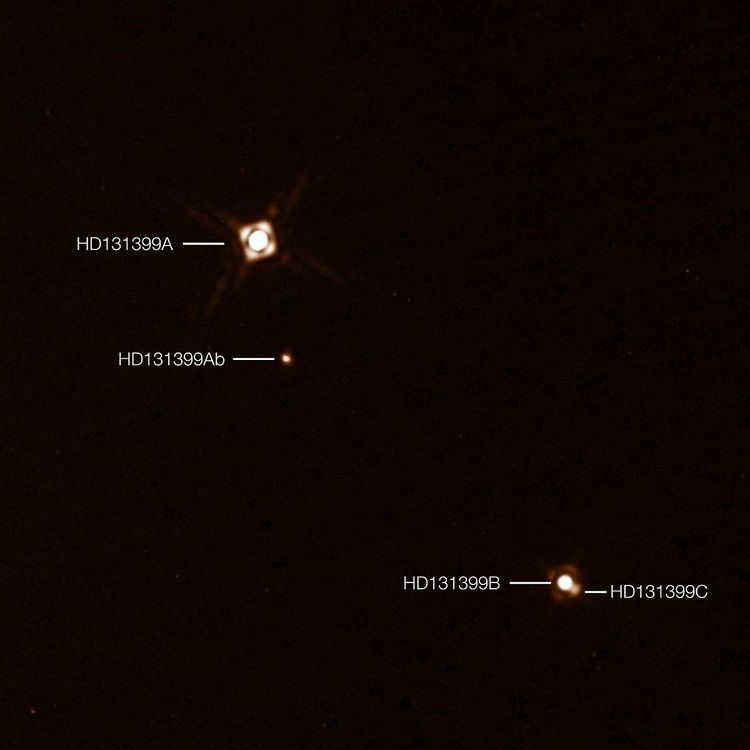Discovery date July 7, 2016 | Discovery status Published | |
 | ||
Discoverer(s) Kevin Wagner, Daniel Apai, Markus Kasper et al. | ||
HD 131399 Ab is an exoplanet orbiting the star HD 131399 A, which is part of the trinary star system HD 131399, 320 light years from Earth in the constellation Centaurus. The other two stars orbit each other and jointly orbit HD 131399 A.
Contents
Characteristics
The planet is about 16 million years old. It has a mass of 4 (± 1) MJ (Jupiter masses), and a temperature of 850 K (577 °C; 1,070 °F) (± 50°K), making it one of the coldest and least massive directly imaged exoplanets. Its atmosphere was shown to contain both water and methane through the use of near-infrared spectroscopy (1.4-1.6 μm). Scientists believe it is unlikely that the planet harbors life due to it being gaseous. The planet is said to have "no liquid water, extremely powerful winds, and no surface; just below the uppermost layer of the atmosphere it rains liquid iron droplets."
The central star HD 131399A is orbited by the less massive stars (HD 131399B and HD 131399C) at about 300 astronomical units (AU). HD 131399B and HD 131399C orbit each other at about 10 AU, while the planet orbits HD 131399A at about 80 AU.
One orbit of HD 131399 Ab takes 550 years. During about a quarter of the orbit, 100–140 years, all three suns are visible during a single day: during this period, any spot on the planet is in perpetual sunlight—as the single sun sets, the binary pair rises.
Discovery
HD 131399 Ab was discovered using the SPHERE imager of the Very Large Telescope at the European Southern Observatory, located in the Atacama Desert of Chile, and announced in a paper in the journal Science. This is the first exoplanet to be discovered by SPHERE and one of very few directly imaged exoplanets. The image was created from two separate SPHERE observations: one to image the three stars and one to detect the faint planet.
